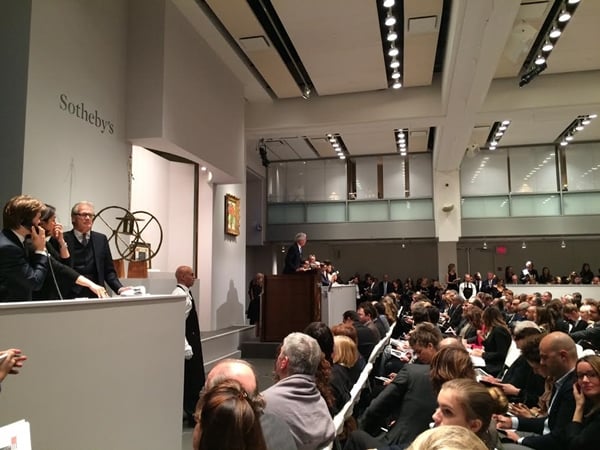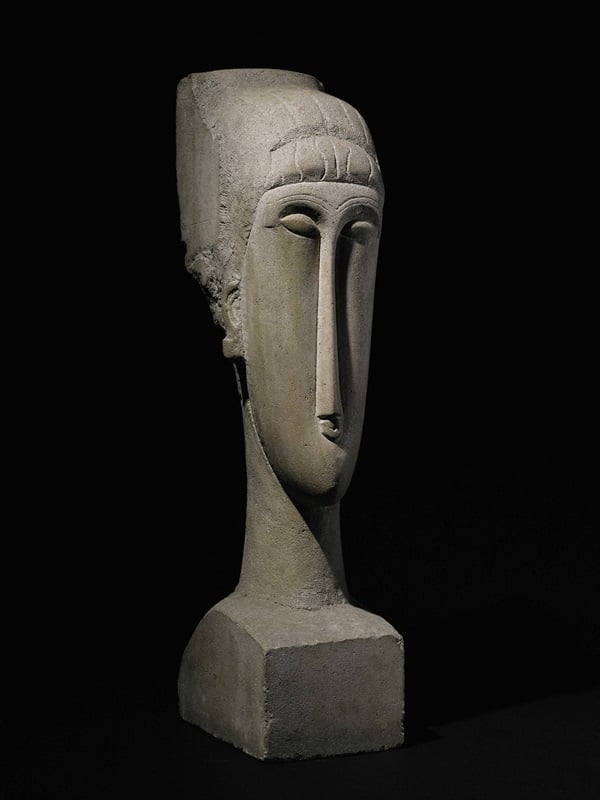Auctions
Test-Driving the GAVEL Calculator at Sotheby’s Record-Breaking Sale
Does the buyer realize she may be spending $10 million for the premium?

Photo: Christie Chu
Does the buyer realize she may be spending $10 million for the premium?

Christie Chu

Founded by financial blogger Felix Salmon, GAVEL is a new calculator that demystifies the total price tag for a work of art at auction, factoring in a work’s hammer price and adding its premium. (See “New GAVEL Calculator Demystifies Auction Prices and Premiums“). We thought we would give it a test-run at the first big sale of the season.
As the sale began a few minutes after 7 pm, and the first lot, Barbara Hepworth’s Makutu, was presented on the auction room’s stark white carousel, the room of mostly older, well-heeled attendees quieted down. It wasn’t until lot eight, however, that people started to murmur. It was Amedeo Modigliani’s sculpture Tête, a slim stone bust that stands 28 inches tall. Starting at $38 Million, the room switched gears to a slower pace with only two phone bidders duking it out (see “$101 Million Giacometti Leads Sotheby’s $400 Million Imp Mod Evening Sale”). At a hammer price of $63 million, I checked the GAVEL calculator to see what the final buying price would be: a cool $76,725,000. As we left the auction, reading the Sotheby’s press release, we saw that GAVEL’s calculated total buying price for Tête matched up to Sotheby’s sale price.
Even more intriguing was Giacometti’s Chariot. The most expensive work sold at the auction, it came in at a hammer price of $90 million, with only one bid, made by phone. This triggered a premium just north of $10 million. Again, GAVEL was precisely on point, with a total sale price of $100,965,000.

Amedeo Modigliani’s
stone Tête (1911–12) comes to auction for the first time and is estimated to sell in excess of $45 million.
Photo: Courtesy Sotheby’s.
Of course, we can’t help but think what the bidder could have purchased for that $10 million premium: Kandinsky’s Diagonale, Magritte’s gouache La Folle du Logis, Pissarro’s Le Chou à Pontoise, Renoir’s Femme à la fenêtre avec vue sur le vieux Nice, Picasso’s Buste d’homme, Léger’s watercolor Les Trois Soeurs, Matisse’s sketch Nu Debout, and Schiele’s historically complicated work Seated woman with bent left leg (torso) (See “Sotheby’s and Christie’s Split on Response to Nazi Victim’s Art“)—a total of eight works for just the premium of one.
But would using the GAVEL calculator give buyers pause if they were able to use it while involved in a bidding war? Probably not. Customers willing to drop $90 million on a trophy work are not going to be splitting hairs over premiums. But for those who are bidding on the lower priced lots, it could prove to be extremely useful if they wish to draw the line at hundred thousand dollar premiums.
The fact that the GAVEL calculator works forwards and backwards (you can calculate the buyer’s premium using the hammer price or using its press released price) is good news. However since auctions are so fast-paced and bidders tend to act in the heat of the moment, it’s unlikely bidders will use it in the auction room anytime soon.